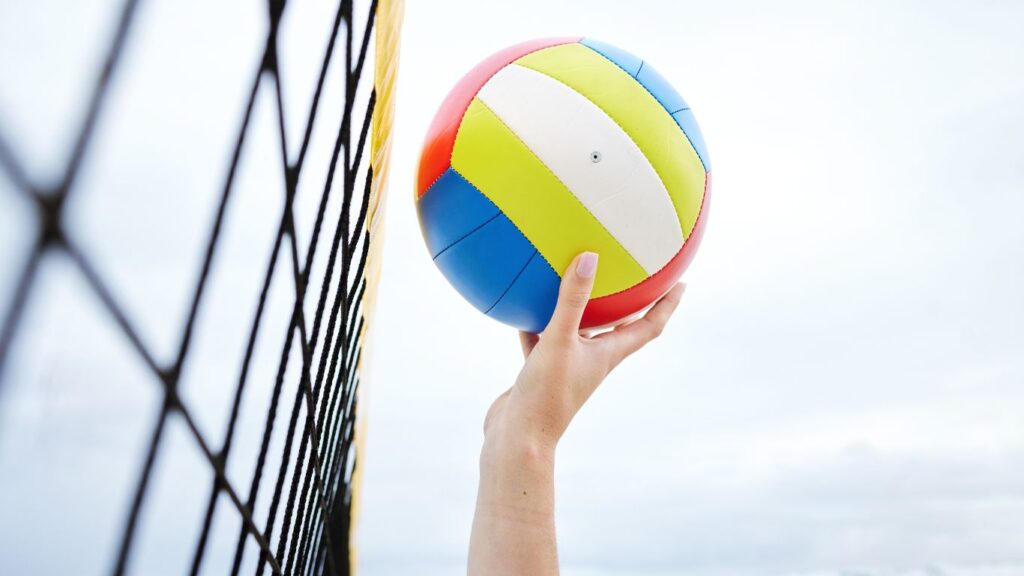Drawing sports scenes can be an exhilarating artistic endeavor, capturing the athletes’ energy, movement, and dynamism in action. Today, we focus on the intricate and beautiful art of drawing a volleyball from a top-down perspective with realistic shading. This guide will provide insights into the history of volleyball drawings, techniques for detailed sketching, and tips for adding dynamic shadows and realistic shading.
Introduction: The Beauty of Volleyball Art
Volleyball, a sport known for its fast-paced action and energetic gameplay, offers artists a unique challenge and opportunity. Capturing the essence of this ball, complete with its intricate seams and texture, can transform a simple sketch into a powerful piece of art. Whether you are using a pencil, charcoal, or a digital drawing tablet, the key lies in the attention to detail and the mastery of shading techniques.
History of Volleyball Drawings

Volleyball drawings have been part of sports art for decades, often used in posters, instructional materials, and fan art. The style and complexity of these drawings have evolved, reflecting advancements in artistic tools and techniques. Early drawings were more simplistic, while modern renditions can be incredibly detailed, showcasing the ball’s texture and the play of light and shadow upon its surface.
Techniques for Drawing Volleyball Players
While today focuses on volleyball, understanding how to draw players can add context to your artwork. When drawing volleyball players:
- Capture Movement: Use dynamic lines to show motion, such as the curve of a spiking arm or the bend of a jumping leg.
- Anatomical Accuracy: Pay attention to the human body’s proportions and how muscles flex during different volleyball actions.
- Expressions and Focus: Depict the intensity and focus on the players’ faces, enhancing the overall emotional impact of the scene.
Tips for Creating a Dynamic Volleyball Scene
Creating a dynamic scene involves more than just the characters and the ball; it’s about infusing the entire piece with energy and movement. Here are some tips:
- Perspective and Angles: A top-down view can provide a unique perspective, making the scene more engaging.
- Background Elements: Include subtle hints of the volleyball court or shadows to ground your characters and ball in a realistic setting.
- Light and Shadow: Use dynamic shadows to convey the direction and intensity of the light, adding depth and realism to your drawing.
Capturing the Energy and Movement

To capture the energy and movement inherent in volleyball:
- Use of Lines: Quick, sweeping lines can suggest speed and motion.
- Focus on Key Moments: Moments like a spike, dive, or serve are filled with movement and drama, perfect for dynamic drawings.
- Fluidity: Ensure the lines and shading flow naturally, avoiding stiffness in both characters and the ball.
Using Color and Shading Effectively
Realistic shading can make your volleyball drawing pop. Whether using pencil, charcoal, or digital tools:
- Light Source: Determine your light source before starting. Highlight areas where the light hits directly and shade gradually to show where the light fades.
- Seams and Texture: Pay extra attention to the seams of the volleyball. Realistic drawings depict these precisely, showing how they cast tiny shadows.
- Layering: Build up layers of shading gradually. Start with light strokes and darken as needed, allowing you to control the depth and realism of your shadows.
FAQs
Q: What materials are best for drawing a realistic volleyball?
A: Graphite pencils, charcoal, and digital drawing tablets are excellent for creating realistic volleyball drawings. Graphite pencils offer precision, while charcoal provides dramatic contrasts and rich textures. Digital tablets allow for easy adjustments and a wide range of shading techniques.

Q: How do I begin drawing a volleyball from a top-down perspective?
A: Start sketching a basic circle to outline the volleyball’s shape. Then, map out the seams using light lines to ensure accuracy. Once the basic structure is in place, you can add details and shading to create a realistic effect.
Q: What is the key to capturing movement in volleyball drawings?
A: The key lies in using dynamic lines and paying close attention to the natural human body’s movements. Show the bend of limbs and muscle flexes accurately, and focus on crucial action moments such as spikes or dives for added drama.
Q: How important is light source determination in shading?
A: Extremely important. Determining the light source helps you accurately depict shadows and highlights, adding depth and realism to your drawing. Always decide on a primary light source before starting the shading process.
Q: Can I use colors in my volleyball drawings?
A: Yes, colors can bring vibrancy and intensity to your drawings. Consider the light source when using colors and ensure your shading transitions smoothly from light to dark areas to maintain realism.
Q: Are there any tips for beginners in sports art?
A: Start with basic shapes and gradually add details. Practice consistently, observe authentic volleyball images and videos for reference, and don’t be afraid to experiment with different techniques and materials to find what works best for you.
Conclusion: Volleyball Drawing as a Creative Expression
Drawing a volleyball with realistic shading and detailed seams from a top-down perspective is a rewarding challenge that can enhance your artistic skills. You can create a dynamic and realistic piece of art by understanding the history, mastering various techniques, and paying attention to details such as light, shadow, and texture. Remember, each stroke and shade is an opportunity to express the beauty and energy of volleyball through your unique artistic lens.









